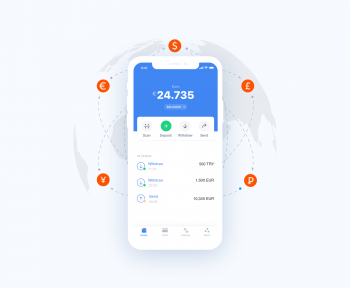Mobile payments are reshaping the financial fabric of Latin America! It’s true; in recent years, the region has witnessed a significant shift toward digital transactions- a change dramatically accelerated by the global pandemic and fueled by the widespread adoption of mobile devices.
This transformative wave has touched the lives of millions, changing how they interact with the economic landscape and each other. Once viewed simply as a convenience, Mobile Payments in Latin America have now emerged as crucial tools that promote economic inclusion and stimulate local economies.
In this blog post, we’ll uncover how the rise of mobile payments is influencing various aspects of daily life and business in Latin America. We’ll examine the broader economic impacts, highlighting how these digital solutions are providing a lifeline to underserved communities and opening up new opportunities for businesses of all sizes.
Furthermore, we’ll discuss the significant advantages that mobile payments in Latin America bring, from improving financial inclusion to levelling the playing field for small and medium-sized enterprises.
Join us as we journey through Latin America’s vibrant market, exploring how technology is not just changing transactions but also empowering people and driving economic growth. In this comprehensive overview, we’ll equip you with a deeper understanding of the importance of mobile payments and the dynamic changes they are bringing to the region.
Let’s discover how these tools are not only solving financial challenges but also crafting a more inclusive and prosperous future for all in Latin America.
Mobile Payments in Latin America
While cash has traditionally dominated the markets of Latin America and the Caribbean, the advent of COVID-19 highlighted the limitations of physical currency. As the pandemic restricted physical movements, consumers and businesses alike turned to digital solutions, with mobile payments at the forefront.
This shift is not just about convenience; it represents a critical step towards integrating the entire population into the digital economy. Mobile payments provide a lifeline to underserved and excluded groups, offering them the opportunity to participate in economic activities previously out of reach.
The growth of e-commerce and digital services has surged, supported by an increase in mobile connectivity. As reported by the Inter-American Development Bank, between early 2020 and mid-2020 alone, traffic to e-commerce sites in the major Latin American markets soared by over 150%. This boom in digital transactions underscores the importance of mobile payments in facilitating seamless and efficient trade both within and across borders.
The Economic Situation in Latin America
The economic landscape of Latin America is diverse, with varying degrees of development and challenges across its nations. However, one common thread is the region’s dynamic informal sector, which includes a significant portion of the population not fully integrated into the formal economy.
Mobile payments are instrumental in bridging this gap by providing informal and small-scale businesses with access to digital financial services. This access is crucial for these businesses to grow and reach new markets beyond their immediate locales.
Moreover, the penetration of mobile payments spurs economic activities by increasing consumption, as it allows for quicker and safer transactions. It also reduces the costs associated with handling cash, thus making financial operations more efficient and less risky.
Advantages of Mobile Payments in Latin America
The benefits of mobile payments in Latin America are many, but let’s try to name a few. First off, mobile payments offer unparalleled convenience, allowing users to make fast transactions anytime and anywhere.
This is particularly beneficial in less urbanised areas where banking infrastructure is limited and sometimes nonexistent. This mobility also extends financial services to remote populations, who are often left out of the traditional banking system.
Financial inclusion is another significant advantage. Mobile payments act as a gateway to other financial services, such as credit, insurance, and savings. For instance, individuals who start using mobile payments are more likely to open their first bank account or obtain their first credit card.
This inclusivity fosters a healthier financial ecosystem and stimulates economic growth by enabling more people and businesses to save, invest, and secure credit.
For businesses, especially micro-, small, and medium-sized enterprises (MSMEs), mobile payments level the playing field. These businesses can compete with larger entities by offering similar ease of transaction, thereby attracting customers who prefer digital payment methods.
What’s more, digital records associated with mobile payments can help businesses get loans and other financial services, as they provide a verifiable transaction history that can demonstrate a company’s creditworthiness.
Enjoy the Simplicity of Mobile Payments in Latin America
As the vibrant countries of Latin America continue to journey ahead in this digital transformation, the role of mobile payments cannot be overstated. From speeding economic growth up to enhancing financial inclusion, the benefits are light as day. As we come to be allies with this digital future, it is essential for policymakers, businesses, and individuals to foster an environment that promotes the adoption and development of mobile payment technologies.
With continued investment and innovation, mobile payments in Latin America have the potential to redefine the economic landscape, making it more inclusive, efficient, and resilient. In embracing these tools, the region not only keeps pace with global trends but also charts a course toward a more prosperous and inclusive future.




